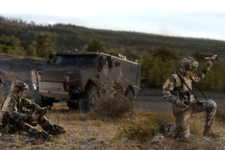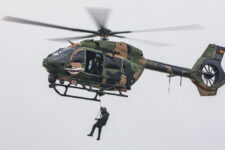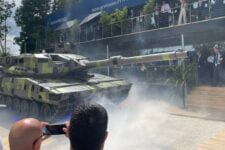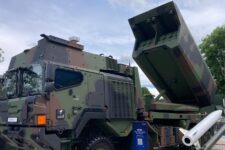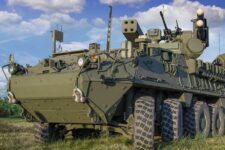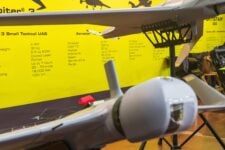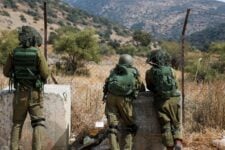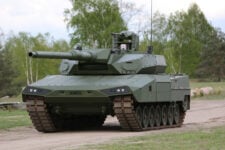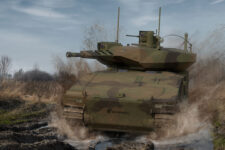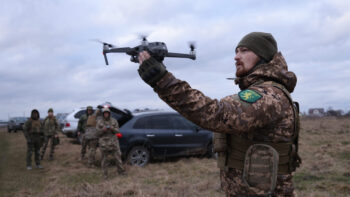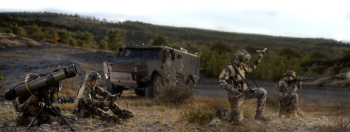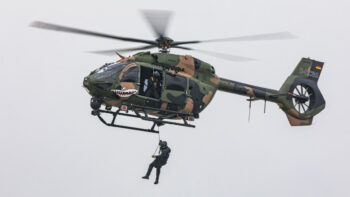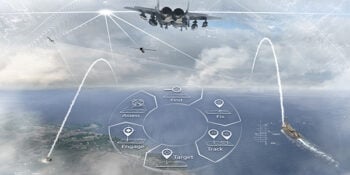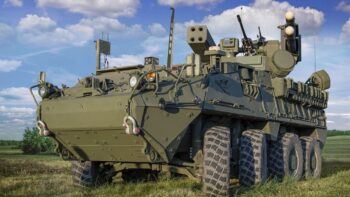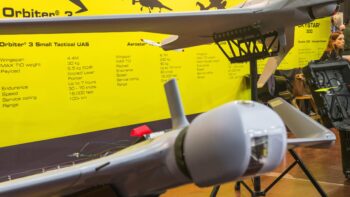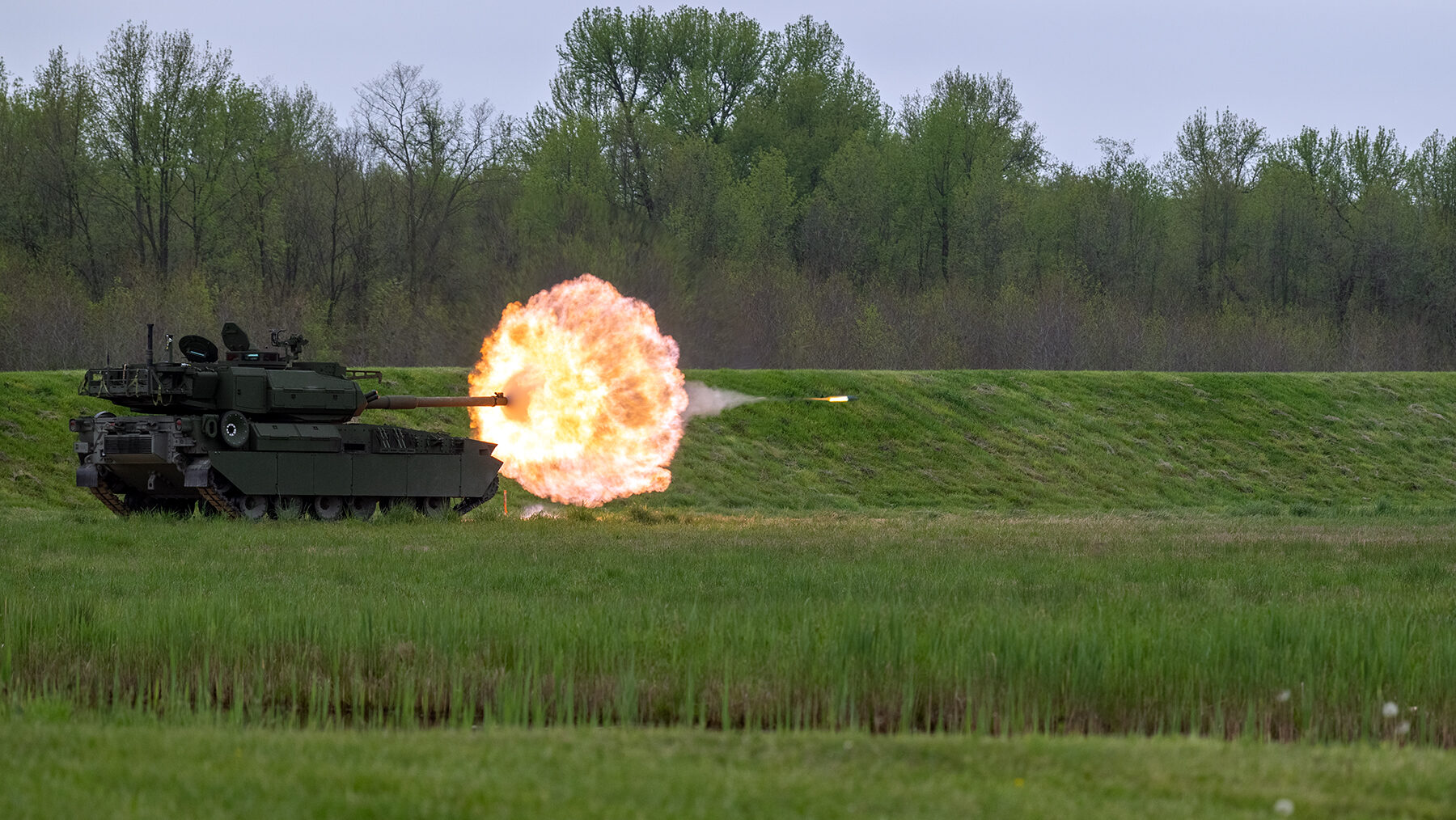
A live-fire demonstration of the Army’s newest and most modernized combat vehicle, the M10 Booker, at a dedication ceremony at Aberdeen Proving Ground, on April 18, 2024. (US Army/Christopher Kaufmann)
WASHINGTON — As the US Army prepares to field its new light tank next year, the M10 Booker, it is gearing up for a testing series that will help determine just what modifications may be needed, according to a one-star general charged with requirements.
Shortly after the July 4 holiday, operators and maintainers at Ft. Liberty, N.C, are scheduled to start new equipment training with the tracked combat vehicle that will last through the August-September timeframe, the director of the Next-Generation Combat Vehicle Cross Functional Team Brig. Gen. Geoffrey Norman told Breaking Defense May 9.
Some of those soldiers and vehicles will then head to Ft. Stewart, Ga. to embark on gunnery training before returning to Ft. Liberty for collective training in November. If the plan stays on track, in early January 2025 the service will take the vehicle to an Initial Operational Test and Evaluation (IOT&E) event that will determine what near-term and long-term changes General Dynamics Land Systems (GDLS) needs.
“There will be a list of things that we want to improve on the vehicle: Our team, along with others will make recommendations as to which things need to be fixed immediately prior to fielding, what things are maybe a longer-term fix and what things may be for consideration later if funding is available,” the one-star general added.
That critical test event also paves the way for the Army and company to ink a full-rate production deal, a decision point slated for the April to June 2025 timeframe, according to recent budget request documents. For now, though, the service envisions acquiring 504 Booker vehicles, with initial vehicles costing the service between $12 million and $14 million.
Initially dubbed the Mobile Protected Firepower (MPF), Army leaders unveiled the fleet’s new name last year: A vehicle now carrying the name of Private Robert Booker (an infantryman) who was killed in action during World War II on April 9, 1943, and Staff Sgt. Stevon Booker (a tanker) who was killed in action on April 5, 2003, during the Thunder Run into Baghdad.
As for its design, in 2022 the GDLS prototype won out over BAE Systems’ design. That winning vehicle is crewed by four soldiers — a commander, a gunner, a loader, and a driver — and includes the XM35 105 mm cannon, a coaxial machine gun, and a diesel engine, according to the company and the service.
The Army devised plans for the Booker fleet before Russia invaded Ukraine, and Norman said the service hasn’t massively overhauled its design to address observations out of that war. (However, it is using those findings for work on the future Abrams tank and Bradley replacement vehicle.)
“Coming out of Ukraine, there have not been significant design adjustments made,” Norman said.
“I know that the 82nd airborne and the 18th airborne corps are really excited about the capability that this platform brings to the light infantry combined arms team. … It’ll be really good for the Army to put it through its paces through this operational test period,” he later added.
That said, the service and GDLS have worked on several vehicle fixes including two larger items: toxic fumes and cooling.
In the fiscal 2022 Director, Operational Test & Evaluation (DOT&E) report, for example, the office noted that after soldiers fired the XM35 105 mm cannon, the vehicle filled with “high levels of toxic fumes.”
Norman explained that this happened because those 105 mm shells were “now sitting in the floor of the vehicle” and residual propellant was burning off.
“It’s not a new problem for the MPF and Booker but certainly the understanding of the potential health risks of those fumes is better understood now than it was when those rounds were designed decades ago,” he added.
To mitigate harm to soldiers inside the combat vehicle, GDLS developed a different ventilation configuration that extracts those fumes more rapidly, and directs them away from the crew.
“Those toxic fumes are now at a safe level,” Norman added.
The second big change involved fixing the Booker’s cooling system towards the back of the vehicle.
“There wasn’t enough airflow going through some radiators … and that was redesigned to make sure that the engine, the transmission and all of the fluids for the vehicle were getting sufficient cooling,” Norman said. “[GDLS has] done that work and those changes have been cut into the production vehicles and then been retrofitted on the earlier vehicles.”
Navy, Marine Corps chiefs sign off on new guidelines for amphib readiness
The new “terms of reference” follow a deep dive the service chiefs ordered earlier this year.

